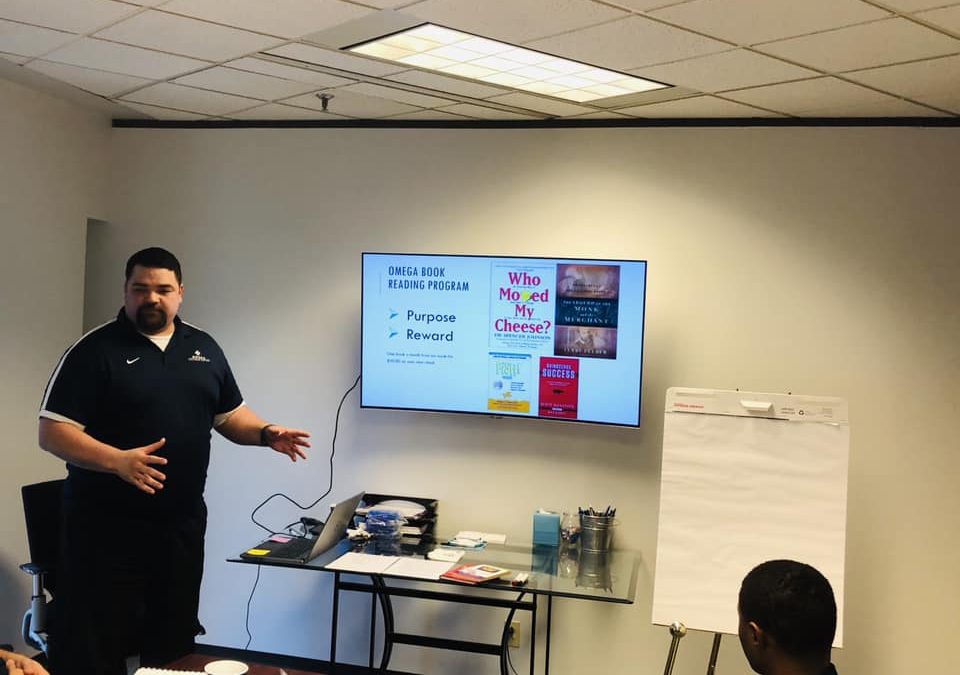Every company has a culture. A company’s culture can be good, it can be bad, or it can be ugly, but it is a culture nonetheless. I am a firm believer that a strong company culture not only gets current employees performing at their best, but also attracts employees to come work for us.
I also believe that it is too late to wait for an employee’s first day to impart our culture on them. That is, we have an opportunity during the recruiting, hiring, and onboarding phases to find the right culture fit and get buy-in to our culture.
We’re obsessed with company culture. We build community, pay employees to read, and we start with our “why.” Click here to learn more.
Recruiting for Company Culture
Any time we post a job opening, there will be interest in the job. That’s the nature of posting jobs. But where you post the job and how you present your company can go a long way in hiring the right culture fit.
Here’s how we approach recruiting at Omega:
- We utilize our network. We also refer to this as, “looking in the right place.” We have had a lot of success through employee referrals at Omega. Our employees who enjoy our company culture are the ones who stick around. They have a pretty good idea when they refer someone whether or not that individual will be a good fit at Omega. We have also had success sharing our job openings through our church and social communities.
- We put our culture on display. If you go to our website or our Facebook page, you’ll see that we’re not shy about talking the Omega Way. When some people read that we want our employees to “know their why,” they may think, “I’d rather just show up, do my job, and go home,” and ultimately decide not to apply to the position. They likely wouldn’t be a culture fit at Omega, so promoting our company culture filters out individuals who don’t fit.
Hiring for Company Culture
Because there is no way to magically see into the future whether a candidate will be a good addition to your team, most of us trust the job interview. Omega uses the interview to evaluate culture fit.
- We look for alignment with our core values. Throughout the interview, I look for signs of our core values: ethics, excellence, and education. This can be someone discussing their relationship with their family or talking about a past work assignment. When I see someone embody our core values, I know they will be a culture fit at Omega.
- We seek attitude over skill set. I can teach the skills needed for someone to be successful at Omega, but I cannot teach attitude. Someone with fewer skills and less experience but a better attitude will fit in better in Omega’s culture 100% of the time.
Onboarding for Company Culture
Omega’s new employee orientation is not your typical onboarding. We do cover the company policies and procedures as you’d expect, but we also order lunch and spend the afternoon together. During this time:
- We talk about knowing our purpose. You may know that I’m a Simon Sinek fan, and that I believe in “starting with why.” At orientation, I encourage our employees to think about why they show up every day to park cars or to run errands. The answer to our “why” is not, “to get a paycheck.” Someone who feels that way would not fit in Omega’s culture. The answer can be, “to make someone’s day better,” or “to save time in someone’s day.” I set this expectation of my employees early in their Omega tenure, so that they see what our culture is all about.
- We build a community. A sense of community among our staff goes a long way in improving culture. When our employees feel like they’re part of something larger, they feel more connected to their work. And when they get to know their co-workers, it is easier for them to approach a co-worker to ask them to trade shifts. Omega’s orientation is an investment in community-building, and in instilling our culture from the onset.
Building a company culture is, of course, an ongoing process. There is always room to make improvements and additions to our culture. But I have found that taking these steps throughout the hiring and onboarding process jumpstarts buy-in in our culture, which contributes to a stronger culture as a whole. What fuels your company culture? Contact us to let us know how you build culture among your team.


Recent Comments